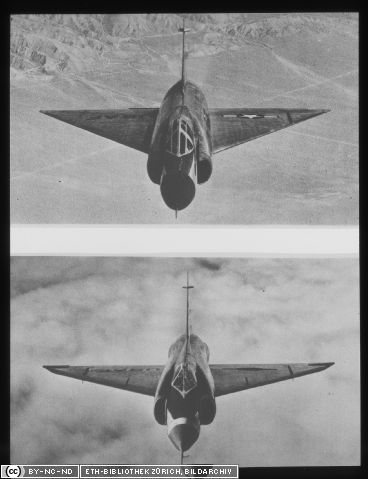Bonjour à tous
Ces derniers temps beacoup de sujet nous ont ramené à lui.
Son apport dans le domaine de l'aérodynamique a été crucial pour le développement des jets et des avions militaire.
Rien qu' à voir le chemin parcouru entre le X1 taillé comme un balle de 0.50 et les F104...
Rien qu'à voir le nom parfois donné à ces fameux winglets... "ailettes whitcomb"...
R. Whitcomb n'est plus.
Ce n'est pas le nom le plus connu dans le grand public
Il est par contre très reconnu dans la spécialité.
http://www.aviationweek.com/aw/blogs/commercial_aviation/ThingsWithWings/index.jsp?plckController=Blog&plckBlogPage=BlogViewPost&newspaperUserId=7a78f54e-b3dd-4fa6-ae6e-dff2ffd7bdbb&plckPostId=Blog%3a7a78f54e-b3dd-4fa6-ae6e-dff2ffd7bdbbPost%3a429ae7df-c07e-4de3-adc4-e8e69250398c&plckScript=blogScript&plckElementId=blogDest
http://fr.wikipedia.org/wiki/Richard_Whitcomb
Bonne journée
Ces derniers temps beacoup de sujet nous ont ramené à lui.
Son apport dans le domaine de l'aérodynamique a été crucial pour le développement des jets et des avions militaire.
Rien qu' à voir le chemin parcouru entre le X1 taillé comme un balle de 0.50 et les F104...
Rien qu'à voir le nom parfois donné à ces fameux winglets... "ailettes whitcomb"...
R. Whitcomb n'est plus.
Ce n'est pas le nom le plus connu dans le grand public
Il est par contre très reconnu dans la spécialité.
http://www.aviationweek.com/aw/blogs/commercial_aviation/ThingsWithWings/index.jsp?plckController=Blog&plckBlogPage=BlogViewPost&newspaperUserId=7a78f54e-b3dd-4fa6-ae6e-dff2ffd7bdbb&plckPostId=Blog%3a7a78f54e-b3dd-4fa6-ae6e-dff2ffd7bdbbPost%3a429ae7df-c07e-4de3-adc4-e8e69250398c&plckScript=blogScript&plckElementId=blogDest
Area Rule to Winglets - Whitcomb's Unmatched Legacy
Posted by Graham Warwick at 10/16/2009 6:30 AM CDT
Next time you are on an airliner - or, if you are fortunate, in your business jet - take a look out of the window at those upswept wingtips and tip your hat to the memory of Richard Whitcomb, the NASA researcher who did more than any other post-war aerodynamicist to take the drag out of flying.
Whitcomb died on Oct. 13, aged 89. In addition to designing the winglet, now a feature of almost every business jet and a growing number of airliners, he developed the supercritical airfoil and transonic area rule. While not as apparent as winglets, most modern aircraft have supercritical wings so they can fly faster more efficiently, and if you look carefully at where wing and tail meet fuselage, you will see clear signs of area ruling.
Born in Illinois, Whitcomb began by building, flying - and continually improving - rubber-band-powered model airplanes. After studying engineering at Worcester Polytechnic Institute, in 1943 he joined NACA's (now NASA's) Langley Reserach Center, where he worked until he retired in 1980. Whitcomb was an intuitive aerodynamicist. "I visualize in my mind what the air is doing," he said in 2002. Those who worked with him remember him using fingertips and a file to sculpt windtunnel models to match his vision.
His first breakthrough, in 1951, was to realise that transonic drag was a function of the total cross-sectional area of an aircraft, not just its fuselage, and that narrowing the fuselage where the wing and tail were attached would reduce drag and allow the aircraft to go supersonic. The wasp-waised "Coke bottle" fuselage produced by area ruling was classically embodied in the Northrop F-5, and has been part of high-speed aircraft design ever since.
The A380 may not have a wasp waist, but check out the complex contours of the wing-body fairing - area ruling at work. Even better examples are high-speed business jets like the Citation X and Global Express. Look at the dramatic narrowing of the fuselage adjacent to the tail-mounted engines - area ruling at work. And while you're at it, look for the rounded leading edge, flattened upper surface and cambered aft section that allows a supercritical wing to delay drag rise and fly faster - they will be there, thanks to Whitcomb.
http://fr.wikipedia.org/wiki/Richard_Whitcomb
Bonne journée





